Sacramento History Museum
Introduction
Text-to-speech Audio
Images
The current facade of the museum--a replica of the old City Hall and Water Works, one of the city's first permanent municipal structures.
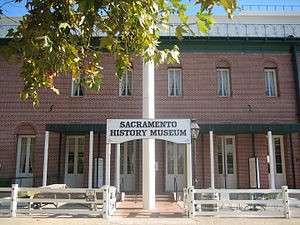
A past exhibit on women's suffrage at the museum. California granted women the right to vote in 1911, several years before the 19th amendment franchised women across the country.
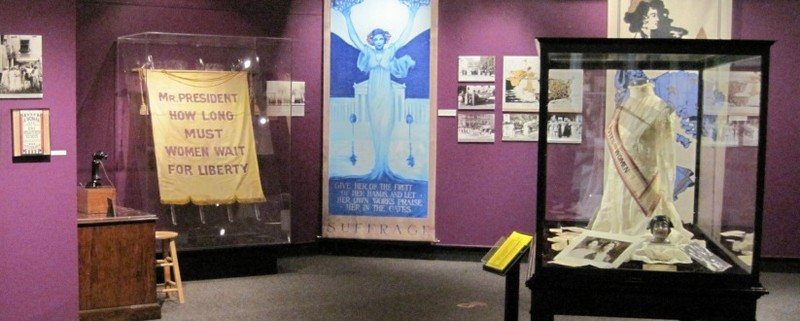
The Museum offers Sacramento Underground tours, giving a glimpse into the disused remnants of the city's original ground level, before it was "jacked up" to prevent further damage from flooding.
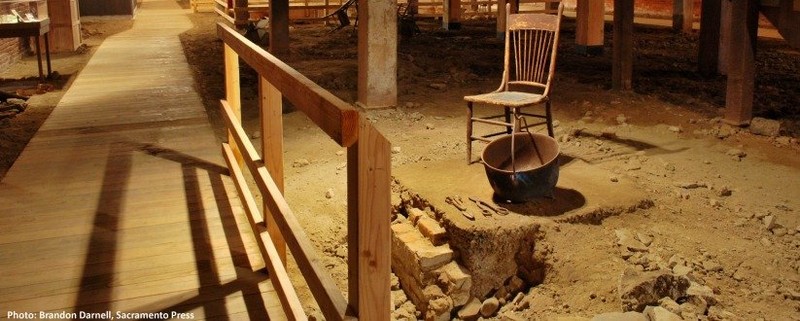
The newly rebuilt Water Works is dedicated in August 1985 as the Sacramento History Center. The Center went through several iterations and partnerships in the 1990s and 2000s before its current incarnation as the Sacramento History Museum.
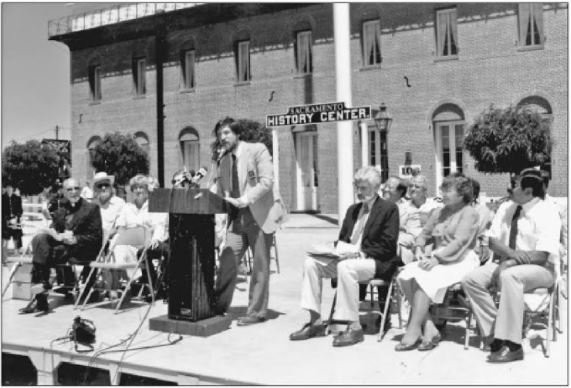
The Water Works as it originally appeared in 1854, in a lithograph reprinted in a 1906 edition of the Sacramento Union newspaper--the year it was sold to Southern Pacific Railroad. The building was demolished seven years later.
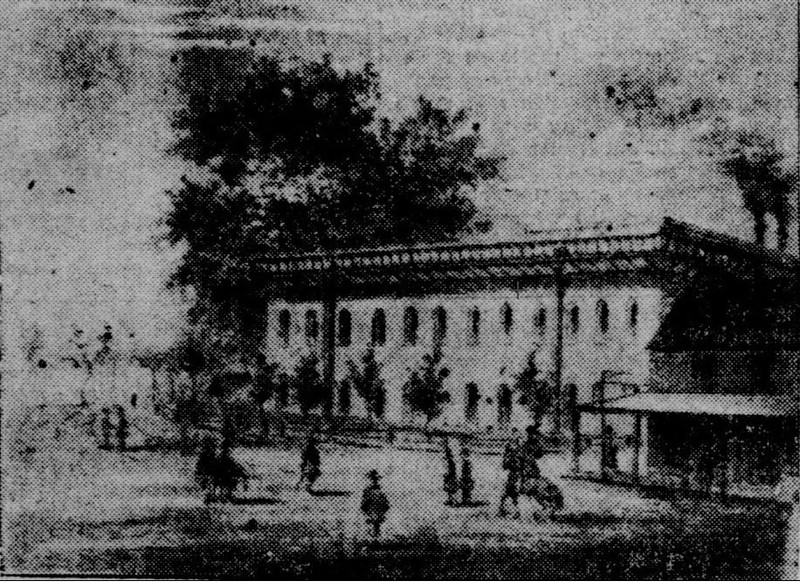
Hardin Bigelow, the first mayor of Sacramento. He served only for 1849-1850, before an infected gunshot wound killed him. One of the earliest champions for improving city infrastructure, he was wounded during the Squatters' Riots of 1850.
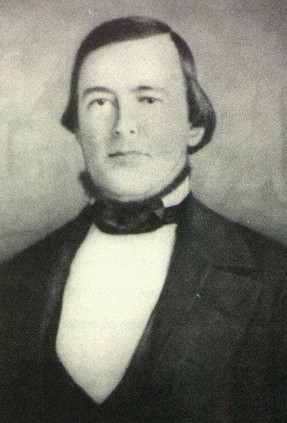
John Sutter, part of whose 133,000 acres would later hold the city of Sacramento. His land was seized by squatters during the Gold Rush and later divided into lots.
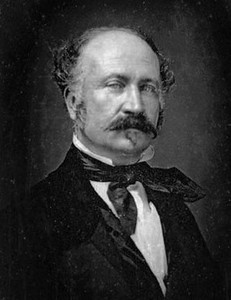
Backstory and Context
Text-to-speech Audio
The land where the American River flows into the waters of the Sacramento has long been home to the Nisenan and Maidu tribes, but its history as the City of Sacramento has its genesis in the arrival of John Sutter in 1839. Sutter, a Swiss-American immigrant, had gained a land grant from the Mexican government of Alta California in order to develop the land at Mexico’s rugged northern frontier, curb Russian territorial ambitions from their nearby base in Fort Ross, and inhibit the movement of American settlers south from Oregon. Paying lip service to these requirements, within a few years Sutter had built a massive agricultural empire spanning tens of thousands of acres, built for the most part on the backs of Native American laborers--little better than slaves and housed in squalid conditions--perhaps as many as 800 at the height of Sutter’s territorial expansion.
Gold was discovered near one of Sutter’s sawmills on the American River, however, and rather than enriching the agricultural magnate, it soon bankrupted him. His laborers fled to the riverbanks and goldfields to make their fortunes, and squatters moved into the area by the thousands. Despite being one of the strongest outposts in California during the Mexican War (with fifty armed guards and two dozen cannon), Sutter’s Fort now lacked the means to repel the “Forty Niners” pouring into Sutter’s land and setting up camp on the banks of the American and Sacramento Rivers. Property destroyed, crops ravaged, and cattle herds now butchered by Americans keen to mine their way to prosperity, Sutter gave his property to his son to divide and sell as he saw fit. These divided lots, stretching a three mile stretch span near the rivers’ confluence, soon began to grow into Sacramento City.
Many of the city’s inhabitants had no intention of staying longer than it took to get rich, and the city’s first four years were dominated by wooden and canvas buildings. Devastating floods and fires repeatedly decimated the city in 1850, 1852, and 1853; despite a volunteer fire department and growing levee system, the matchstick city on a floodplain simply could not withstand the elements. Funds were raised to elevate the city above the rivers’ flood-prone waters. Vast amounts of soil were carted in by wagon and merchants moved their storefronts up a story (giving birth to the Underground, which can be toured to this day). Newer buildings were often built of brick to increase their resistance to flood and fire.
Thus the “modern” three-story City Hall came into being in 1854, constructed entirely of brick and housing a panoply of the budding city’s municipal services. The move signaled Sacramento’s need to grow with the times: it was selected that year as the state’s capital. Ground was broken for the building in October 1853, and it was completed on April 1, 1854.
The building’s thick walls were crowded with various offices of government. On the ground floor, one half belonged to the county jail, the other half to the city jail. The second floor held both city and county offices, including the mayor and city council. The upper levels held pumps and a 200,000 gallon tank to pressurize the city’s growing municipal water system, supplying 39,100 gallons an hour--the building had been designed from the ground up as the city’s central pumping station, and indeed is referred to often in contemporary literature as the “Water Works,” not City Hall.
As a water works, it proved to have flaws. The pumps were insufficient for the fast growth of the city, and as the amount of pipe laid quadrupled from 1854 to 1856, complaints began pouring in about poor water pressure in outlying areas. In 1870, the system failed altogether, and the city moved quickly to condemn the property next door to build an expanded pump system, then extended the huge rooftop tank upward an additional fifteen feet. By 1873, even this had proved wanting, and additional water works were built around the city to take up the slack.
Sources from the early 20th Century state that “since 1880 there has been no material change made in the works,” but in reality the building itself had begun to suffer structural damage, having not been originally designed to hold so much weight on its roof, and constantly rattled by passing freight and passenger trains only a few feet away. In 1906, the property was sold to Southern Pacific Railroad, which had desired the space to expand their rail lines. In 1913, when the new City Hall was finished, the Water Works was torn down.
In 1985 however, the building was resurrected as the Sacramento History Center, transitioning through several iterations over the next two decades before being renamed the Sacramento History Museum. Despite the fluctuating monikers, it has been dedicated to telling the story of Sacramento’s early farmers, miners, pioneers, merchants, Native Americans, Chinese Americans, and more for over thirty years. Located in the heart of the Old Town district, the Museum provides a unique opportunity to encounter the city’s history along the streets where it took place with a variety of permanent and temporary exhibits. The Museum also hosts Sacramento Underground tours, offering rare glimpses into some of the city’s oldest surviving structures.
Sources
California State Park and Recreation Division. "General Plan and Final Environmental Impact Report
Willis, William L.. History of Sacramento County, California. Los Angeles, CA. Historic Record Company, 1913. pp.403-404. https://play.google.com/books/reader?id=FRU1AQAAMAAJ&printsec=frontcover&output=reader&hl=en&pg=GBS....
Davis, Winfield J.. An Illustrated History of Sacramento County, California. Chicago, Illinois. Lewis Publishing Company, 1890. pp. 164-166 https://books.google.com/books?id=2jvVDI76pQgC&dq=Sacramento+Water+Works+building&source=gbs_navlink...
"John Sutter and California's Indians." Wild West Magazine. Wild West Magazine, June 12, 2006. http://www.historynet.com/john-sutter-and-californias-indians.htm
Sutter, John A.. The Discovery of Gold in California. The Virtual Museum of the City of San Francisco. Accessed February 07, 2018. http://www.sfmuseum.org/hist2/gold.html. Originally from Hutchings' California Magazine, printed November 1857.
